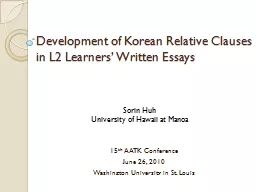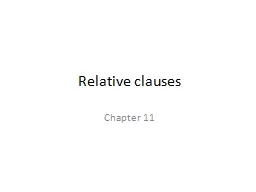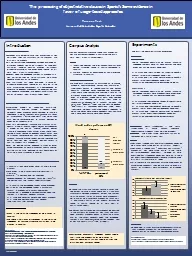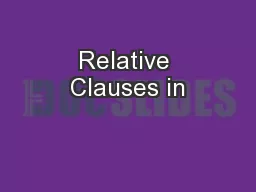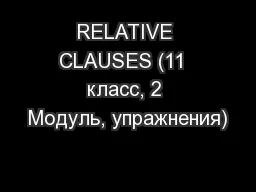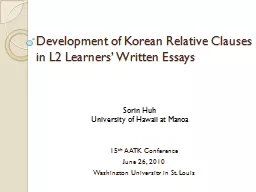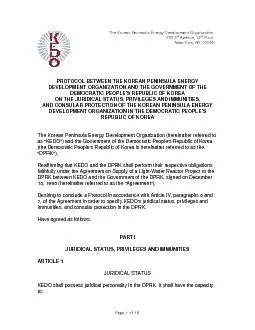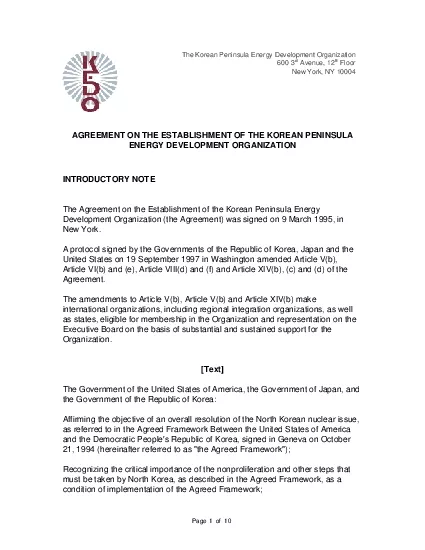PPT-Development of Korean Relative Clauses
Author : aaron | Published Date : 2018-12-15
in L2 Learners Written Essays 15 th AATK Conference June 26 2010 Washington University in St Louis Sorin Huh University of Hawaii at Manoa Purposes of the Study
Presentation Embed Code
Download Presentation
Download Presentation The PPT/PDF document "Development of Korean Relative Clauses" is the property of its rightful owner. Permission is granted to download and print the materials on this website for personal, non-commercial use only, and to display it on your personal computer provided you do not modify the materials and that you retain all copyright notices contained in the materials. By downloading content from our website, you accept the terms of this agreement.
Development of Korean Relative Clauses: Transcript
Download Rules Of Document
"Development of Korean Relative Clauses"The content belongs to its owner. You may download and print it for personal use, without modification, and keep all copyright notices. By downloading, you agree to these terms.
Related Documents

